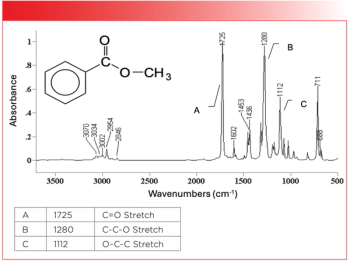Key Points
- Researchers used EC-SERS to study structural changes in the human neuropeptide Urotensin II on silver electrodes, revealing key interactions of specific amino acid residues under varying electrical potentials.
- The peptide's adsorption behavior differed between sodium sulfate and sodium perchlorate solutions, with stronger interactions and greater conformational stability observed in perchlorate, suggesting enhanced surface binding and structural rigidity.
- These findings provide new insights into hU-II’s molecular dynamics, offering potential pathways for designing targeted therapeutics for cardiovascular diseases and emphasizing EC-SERS as a valuable tool in peptide-based biomedical research.
In a recent study published in Spectrochimica Acta Part A: Molecular and Biomolecular Spectroscopy, a team of researchers from the State Research Institute Center for Physical Sciences and Technology in Lithuania investigated the surface interaction dynamics and structural behavior of the human neuropeptide Urotensin II (hU-II) (1). This study, which was led by Aliona Klimovich, showcased the applicability of electrochemical surface-enhanced Raman scattering spectroscopy (EC-SERS) in investigating the peptide’s conformational rearrangements on silver electrodes. The information gleaned from this study suggests how EC-SERS can be applied in additional and pharmaceutical applications (1).
What is Urotensin II?
Urotensin II (hU-II) is a potent regulatory peptide known to play significant roles across various human systems including the cardiovascular system, central nervous system, and kidneys (1,2). As a neuropeptide, hU-II may play an important role in the development of tumors (2). Despite its physiological importance, detailed experimental insights into the structure and dynamics of hU-II, especially in aqueous solutions, have remained limited until now.
What was the Experimental Procedure?
In the study, Klimovich and the team’s experimental procedure applied EC-SERS to examine the interaction of hU-II with electrochemically roughened silver (Ag) electrodes over a potential range of −1.0 to 0.0 volts (1). EC-SERS was chosen for this study because it significantly enhances Raman signals at metal surfaces, which allows the researchers to analyze the behavior of the hU-II peptide at the solid–liquid interface (1).
Under open circuit potential (OCP) conditions, the peptide primarily interacts with the Ag surface through two key amino acid residues, phenylalanine (Phe6) and tryptophan (Trp7), within the cyclic hexapeptide sequence c[Cys5-Phe6-Trp7-Lys8-Tyr9-Cys10] (1). However, when a negative voltage was applied, Klimovich and the team discovered that the side chains of Phe6 and Trp7 reorient from an angular to a vertical position relative to the electrode surface. This conformational shift enables additional residues, lysine (Lys8) and tyrosine (Tyr9), to approach the silver surface, effectively anchoring the peptide more firmly through interactions involving NH₃⁺ and OH functional groups (1).
What About the Peptide’s Absorption Behavior?
As part of their study, the researchers tested the peptide's adsorption behavior in buffer solutions containing either sodium sulfate (Na₂SO₄) or sodium perchlorate (NaClO₄). Although the overall mechanism of peptide adsorption remained consistent across both solutions, there were some differences that emerged. For example, in NaClO₄-containing solutions, the Raman signal intensities for Phe6 and certain amide groups were significantly higher across the tested voltage range (1). This observation suggests a stronger interaction and closer localization of the peptide's backbone to the electrode surface in perchlorate environments (1).
Another important finding in this study was the S–S vibrational mode of the disulfide bridge (Cys5–Cys10). The researchers noticed that it was more pronounced in the NaClO₄ medium, which indicates enhanced conformational stability and surface interaction (1). Additionally, changes in the Raman spectra of Trp7 and Tyr9 revealed shifts in their microenvironment, with Trp7 transitioning from a polar to a nonpolar setting near −1.0 V and Tyr9 reorienting because of its phenolic interaction with the Ag surface (1).
These findings help improve our fundamental understanding of hU-II, and they also give insight into how to better design pharmacological analogs aimed at modulating this peptide’s biological function (1).
What Are the Next Steps?
Given hU-II’s association with vasoconstrictive responses and its implication in cardiovascular diseases, understanding its surface interaction at a molecular level is a critical step toward developing novel therapeutic agents (1). By bridging the gap between structural chemistry and biomedicine, this study highlights the utility of EC-SERS as a tool that can be applied in peptide research more broadly.
References
- Klimovich, A.; Golubewa, L.; Padrez, Y.; Matulaitiene, I. Characterization of Human Urotensin II Peptide Adsorbed on Silver Electrode by Surface-enhanced Raman Scattering Spectroscopy. Spectrochimica Acta Part A: Mol. Biomol. Spectrosc. 2025, 329, 125565. DOI: 10.1016/j.saa.2024.125565
- Leong Ong, K.; Lam, K. S. L.; Cheung, B. M. Y. Urotensin II: its function in health and its role in disease. Cardiovasc. Drugs Ther. 2005, 19 (1), 65–75. DOI: 10.1007/s10557-005-6899-x






